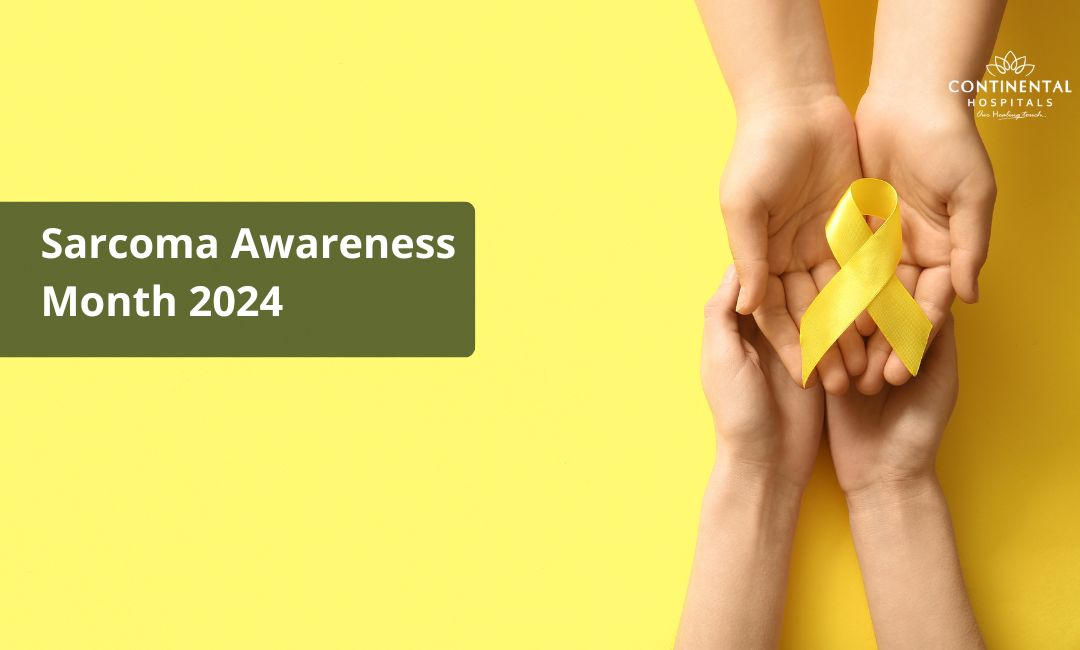Sarcomas are a rare and complex group of cancers that develop in the bones and soft tissues of the body. World Sarcoma Month, observed annually in July, aims to raise awareness about these often-overlooked cancers, their symptoms, diagnosis, treatment options, and the challenges faced by patients and their families. In this comprehensive guide, we delve into the world of sarcomas to provide a deeper understanding of these diseases.
World Sarcoma Month
World Sarcoma Month serves as an opportunity to educate the public, raise awareness about the signs and symptoms of sarcomas, and support ongoing research efforts. Events and initiatives during this month include:
- Community Awareness Campaigns: Through social media, local events, and educational materials.
- Fundraising Events: To support research, patient support programs, and advocacy efforts.
- Medical Education: Training healthcare professionals to improve diagnosis and treatment outcomes for sarcoma patients.
Consult with an Oncologist who can help you understand the benefits of early detection of cancer or you can also contact us at Continental Cancer Centre
Hot Line Number - +91 96019 66666
Importance of Sarcoma Month
- Awareness and Education: Increases public awareness about sarcoma, a rare and often overlooked group of cancers.
- Early Detection: Promotes early detection and diagnosis, which can significantly improve treatment outcomes and survival rates.
- Research Funding: Encourages donations and funding for research, leading to advancements in treatment options and potential cures.
- Support and Resources: Highlights the need for resources and support for patients and families affected by sarcoma.
- Advocacy: Amplifies advocacy efforts to influence healthcare policies and increase funding for sarcoma research and treatment.
What is Sarcoma?
Sarcomas originate in the connective tissues of the body, which include bones, muscles, tendons, cartilage, nerves, fat, and blood vessels. They can develop anywhere in the body, but most commonly appear in the arms, legs, chest, or abdomen. There are two main types of sarcomas:
Soft Tissue Sarcomas: These form in the soft tissues of the body and can occur in muscles, tendons, nerves, fat, blood vessels, and deep skin tissues.
Bone Sarcomas: These develop in the bones and are less common than soft tissue sarcomas.
Types of Sarcomas
There are more than 70 different subtypes of sarcomas, each with its own unique characteristics and behaviors. Some of the most common types include:
Osteosarcoma: A type of bone sarcoma that usually develops in the long bones of the arms and legs, often affecting children and young adults.
Ewing Sarcoma: Another type of bone sarcoma that primarily affects children and adolescents, commonly appearing in the pelvis, legs, and arms.
Leiomyosarcoma: A soft tissue sarcoma that originates in smooth muscle tissue, which can occur in the uterus, abdomen, or blood vessels.
Liposarcoma: A soft tissue sarcoma that develops in fat cells, typically found in the thighs, behind the knee, or abdomen.
Synovial Sarcoma: A rare soft tissue sarcoma that usually arises near large joints such as the knee or ankle.
Symptoms of Sarcoma
Identifying sarcoma can be challenging because symptoms often resemble those of other, more common conditions. Symptoms may include:
A lump or swelling: Often painless, located under the skin or deep in the body.
Pain or tenderness: Especially if a tumor presses on nerves or muscles.
Limited range of motion: If a tumor is near a joint.
Abdominal pain or discomfort: If a tumor is in the abdomen.
Diagnosis
Due to their rarity and complexity, sarcomas require specialized testing and expertise for accurate diagnosis. Diagnostic procedures may include:
Imaging tests: Such as X-rays, CT scans, MRI scans, or PET scans to visualize the tumor and determine its size and location.
Biopsy: A procedure to remove a sample of tissue from the tumor for examination under a microscope to determine if it is cancerous and, if so, what type of sarcoma it is.
Treatment Options for Sarcoma
Treatment for sarcoma depends on factors such as the type, location, stage of the cancer, and overall health of the patient. Common treatment options include:
Surgery: The primary treatment for most sarcomas involves surgically removing the tumor and surrounding tissue.
Radiation Therapy: Used before or after surgery to kill cancer cells or shrink tumors.
Chemotherapy: Sometimes used in combination with surgery and radiation therapy, particularly for aggressive or metastatic sarcomas.
Targeted Therapy and Immunotherapy: Emerging treatments that target specific molecules involved in cancer growth or harness the body's immune system to fight cancer cells.
Challenges and Research
Despite advancements in treatment options, sarcomas present several challenges:
Early Detection: Many sarcomas are diagnosed at advanced stages because symptoms may not appear until the tumor grows large or presses on nearby tissues.
Rareness: Sarcomas account for only about 1% of adult cancers and 15% of childhood cancers, making research and funding for treatments more challenging.
Metastasis: Sarcomas can spread to other parts of the body, making them more difficult to treat.
Ongoing research aims to improve early detection methods, develop targeted therapies, and better understand the genetic and molecular characteristics of sarcomas.
Supporting Sarcoma Patients
For individuals and families affected by sarcoma, support and resources are crucial. Organizations such as the Sarcoma Foundation of America, Sarcoma UK, and others provide:
- Patient Support: Counseling, support groups, and educational resources for patients and families.
- Advocacy: Raising awareness among policymakers and advocating for increased funding for sarcoma research.
- Research Funding: Supporting innovative research projects aimed at improving treatments and finding a cure for sarcomas.
Conclusion
World Sarcoma Month is a time to recognize the challenges faced by sarcoma patients, celebrate advancements in research and treatment, and promote awareness in communities worldwide. By increasing understanding and support for sarcoma patients and their families, we can work towards better outcomes and ultimately, a cure for these rare and complex cancers.
Consult with an Oncologist who can help you understand the benefits of early detection of cancer or you can also contact us at Continental Cancer Centre
Hot Line Number - +91 96019 66666
Related Blog Topics:
1. What Is Cancer? Symptoms, Signs, Types & Causes
2. Early Detection Tips for Common Cancers
.webp)







